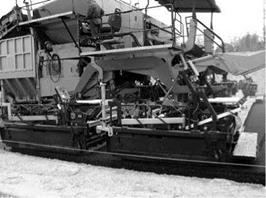TESTING THE FINISHED LAYER
A series of acceptance tests are carried out after finishing the placement of a mixture. They usually comprise measuring the content of air voids and the compaction factor, conducted on specimens of cores taken from the finished pavement. In many countries, nuclear density gauges are used for testing the homogeneity of compaction. When this is the case, cores are only required for calibration and comparisons with the nuclear gauge. Other properties checked on finishing the layer are skid resistance and the macrotexture depth. The methods used for these tests depend on national specifications.
10.6.1 Air Voids in a Compacted SMA Layer
The content of voids in the compacted SMA layer is the most commonly found parameter checked at the acceptance of a finished layer and is always mentioned...
read more





